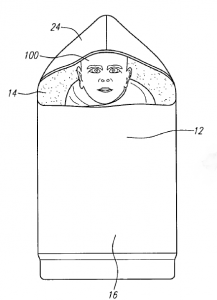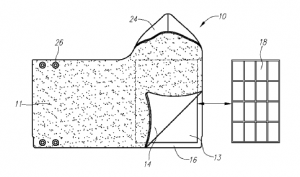This post is one of a series in the #Innovate4Health policy research initiative.
 By Gleb Savich
By Gleb Savich
Preterm birth is the leading cause of death for children under five years old. An estimated 15 million babies are born before 37 weeks gestation each year, and nearly 1 million children under five die due to complications associated with such births. Nearly three quarters of them could be saved with current interventions. The disparity in survival rates of preterm babies based on a country’s wealth is startling. In high-income countries, almost all of the babies born after 32 weeks survive, but in low-income countries, only half survive.
Hypothermia is a significant factor contributing to the death of preterm babies. Preterm newborns are particularly vulnerable to hypothermia because they cannot generate enough heat to warm themselves on their own. They also have less stored fat to insulate themselves against heat loss. Infant incubators are commonly used in neonatal care units to help preterm infants maintain safe body temperature. Such equipment costs thousands of dollars and requires a stable source of electricity to operate.
Healthcare interventions in the developing world often prove ineffective. Expensive equipment donated to hospitals in the developing countries is often useless because a stable electricity supply and replacement parts are unavailable. Despite long-term efforts of well-intentioned people, innovative solutions have been needed to meet these local challenges rather than more donations of existing technology.
 Specifically, there has been a need to design infant incubators that address the unique challenges of the developing world. Embrace infant warmers, which were developed through a project class at Stanford University called Design for Extreme Affordability, were designed to meet these challenges. Embrace infant warmers have won several awards, including the Economist Innovation Award and TED Fellows award.
Specifically, there has been a need to design infant incubators that address the unique challenges of the developing world. Embrace infant warmers, which were developed through a project class at Stanford University called Design for Extreme Affordability, were designed to meet these challenges. Embrace infant warmers have won several awards, including the Economist Innovation Award and TED Fellows award.
Projects start with developing-world challenges in mind, and students create innovative solutions that address problems with using existing technology. An integral part of the course are need-finding trips, during which the students learn about the needs of the target community while on location. This enables the students to formulate an appropriate design process while also establishing deep connections with the members of the community.
The challenge leading to Embrace was to create a cheap infant incubator. They started by visiting hospitals in Nepal, and they quickly realized that most births occur in villages far away from hospitals with stable sources of electricity. Donated infant incubators were available, but they were left in storage because the birth facility lacked the infrastructure to use the machines.
The team designed a portable device capable of maintaining the infant at approximately body temperature without having to be continuously connected to an electricity source. It is able to do so by utilizing specialized temperature-regulating materials that keep a near-constant temperature despite gaining or losing heat energy.
 These materials are called “phase change materials” because they melt or solidify (in other words, they change phases) near body temperature. People normally think about the transfer of heat energy as making one thing warmer or another thing colder, but this is not true during a phase change. For example, during solidification, the material releases heat energy, which can be used to keep the infant warm, but it maintains its own temperature because the heat comes from the process of solidification rather than a loss of temperature.
These materials are called “phase change materials” because they melt or solidify (in other words, they change phases) near body temperature. People normally think about the transfer of heat energy as making one thing warmer or another thing colder, but this is not true during a phase change. For example, during solidification, the material releases heat energy, which can be used to keep the infant warm, but it maintains its own temperature because the heat comes from the process of solidification rather than a loss of temperature.
Embrace infant warmers look like a swaddle or a tiny sleeping bag that cradles an infant. A temperature-regulating element is placed between the inner and outer fabric layers of the infant warmer. This element contains the phase change material, chosen so that it melts or solidifies around normal human body temperature.
The temperature-regulating element can be heated or cooled to the desired temperature utilizing a recharging unit plugged into an electrical outlet or by placing the element into warm or cool water. Thus, no electricity is required to use the device. But even intermittent power sources can be beneficial because the unit can be charged when it is not in use. Once at the desired temperature, the temperature-changing element is inserted between the fabric layers of the infant warmer. One current version of the infant warmer maintains the desired temperature for at least 4 hours.
 To further advance their invention, the team founded the Embrace Innovations company and have begun developing a strong patent portfolio. Secure and effective patent rights allow the enterprise to grow and adapt in furtherance of their mission. This includes adopting strategies such as providing products through for-profit and nonprofit mechanisms and contracting with third-party manufacturers to produce the devices. Income derived from the initial innovations can then be used for additional projects that will further benefit the developing world.
To further advance their invention, the team founded the Embrace Innovations company and have begun developing a strong patent portfolio. Secure and effective patent rights allow the enterprise to grow and adapt in furtherance of their mission. This includes adopting strategies such as providing products through for-profit and nonprofit mechanisms and contracting with third-party manufacturers to produce the devices. Income derived from the initial innovations can then be used for additional projects that will further benefit the developing world.
Today, Embrace infant warmers are manufactured by Phoenix Medical Systems in India and are available for a small fraction of the cost of standard incubators. The nonprofit arm of the company, Embrace Global, is a part of Thrive Networks, an international NGO that utilizes evidence-based innovations to improve the lives of underserved populations in Southeast Asia.
The Embrace team has also gone on to develop other products: sleeping bags and swaddles for infants under the brand, Little Lotus. Like Embrace infant warmers, these products utilize phase change materials to ensure optimal sleeping temperature for babies. A portion of proceeds from every purchase of a Little Lotus product goes to providing access to Embrace infant warmers, showing how parallel projects can be used to benefit vulnerable populations in the developing world.
With the help of Embrace Global and its partners, Embrace infant warmers have been used to care for over 200,000 low birth weight and premature infants across 20 countries in the developing world. This is the result of both the important innovation and the forward-thinking development that can only occur when inventors have control over the ideas they create.
#Innovate4Health is a joint research project by the Center for the Protection of Intellectual Property (CPIP) and the Information Technology & Innovation Foundation (ITIF). This project highlights how intellectual property-driven innovation can address global health challenges. If you have questions, comments, or a suggestion for a story we should highlight, we’d love to hear from you. Please contact Devlin Hartline at [email protected].